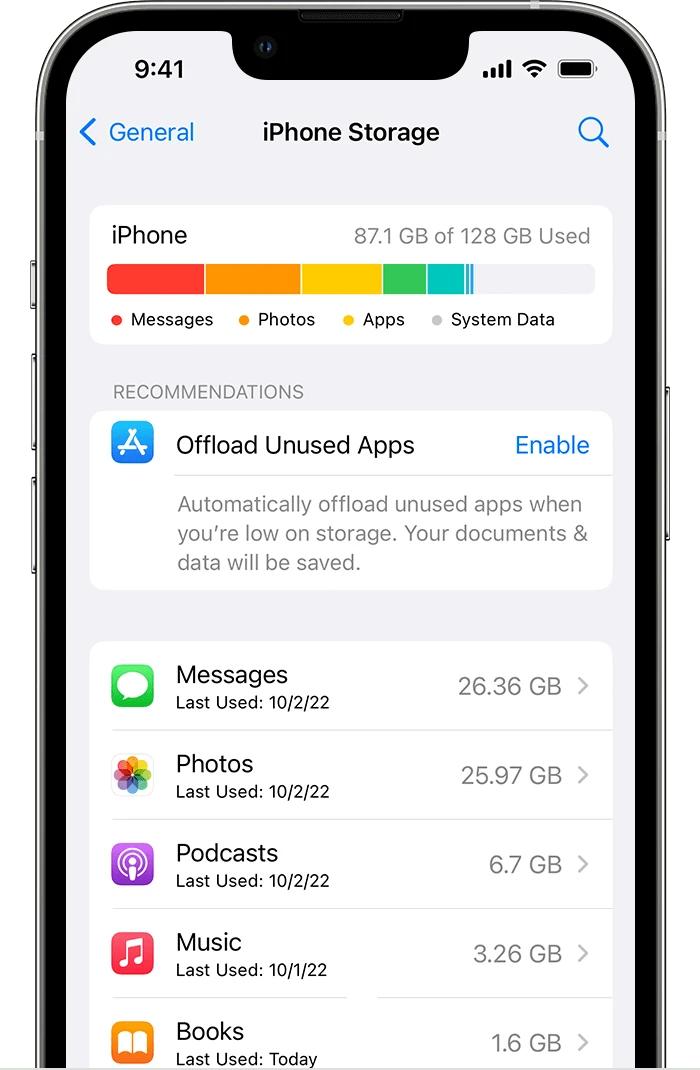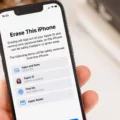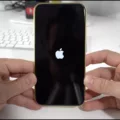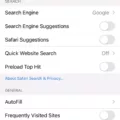Is your iPhone storage not loading? Don’t worry, you’re not alone. Many iPhone users have experienced this issue, where the storage information fails to load in the Settings app. This can be frustrating, especially if you’re trying to free up space or figure out what is taking up all that precious storage on your device. In this article, we will explore some possible reasons for this problem and provide you with some solutions to get your storage information back on track.
One of the first things you can try is to force quit the Settings app. This can help restart the loading process that might be stuck. To do this, simply double-click the home button (on iPhone models with a home button) or swipe up from the bottom of the screen (on iPhone models without a home button) to access the app switcher. Then, swipe left or right to find the Settings app and swipe it up or off the screen to close it. After force quitting, reopen the Settings app and check if the storage information is now loading.
If force quitting the app doesn’t solve the issue, another possible solution is to clear the cache files in Safari. Sometimes, accumulated cache files can interfere with the proper functioning of the Settings app. To clear the cache in Safari, open the Settings app and scroll down until you find the Safari option. Tap on it to open the Safari settings. Then, look for the option that says “Clear History and Website Data” and tap on it. This will remove all the cache files stored by Safari on your iPhone. After clearing the cache, go back to the Settings app and check if the storage information is now loading.
If the problem persists, it could be due to a lack of available storage space on your device. Check how much storage you have left by going to the Settings app, tapping on “General,” and then selecting “iPhone Storage.” Here, you will see a breakdown of your storage usage and available space. If you’re running low on storage, you can free up space by deleting unnecessary apps, clearing out old messages and photos, and offloading unused apps. You can also enable iCloud Photo Library to store your photos and videos in the cloud, freeing up space on your device.
In some cases, the issue might be related to a software bug or glitch. Make sure your iPhone is running the latest version of iOS by going to the Settings app, tapping on “General,” and selecting “Software Update.” If an update is available, download and install it. Software updates often include bug fixes that can resolve issues like the one you’re experiencing.
If none of these solutions work, you may want to consider contacting Apple Support or visiting an Apple Store for further assistance. They will be able to diagnose the problem and provide you with the appropriate solution.
If your iPhone storage is not loading, there are several steps you can take to resolve the issue. Try force quitting the Settings app, clearing the cache in Safari, freeing up storage space on your device, and installing any available software updates. If the problem persists, seek assistance from Apple Support or visit an Apple Store. By following these steps, you should be able to get your storage information back on track and free up space on your iPhone.

Why is Your Storage Not Loading On iPhone?
There can be several reasons why the storage is not loading on your iPhone. Here are some possible explanations:
1. Software issue: Sometimes, a software glitch can prevent the storage from loading properly. This can happen due to a bug in the operating system or an issue with the Settings app itself. In such cases, force quitting the Settings app and restarting your device can help resolve the problem.
2. Insufficient memory: If your iPhone’s memory is almost full, it can slow down or prevent the storage from loading. When the device doesn’t have enough available memory, it may struggle to load and display the storage information. Deleting unnecessary files or apps can free up space and potentially resolve the issue.
3. Slow internet connection: If your iPhone is connected to the internet, a slow or unstable connection can affect the loading of storage information. In such cases, try connecting to a different Wi-Fi network or turning off cellular data temporarily to see if that resolves the problem.
4. Large amount of data: If your iPhone has a significant amount of data, such as a large number of photos, videos, or documents, it may take time for the storage information to load. This is especially true if you haven’t checked the storage for a while. Give it some time to load, and if it still doesn’t display, try force quitting the Settings app and checking again.
5. Device performance issues: If your iPhone is experiencing performance issues or running slowly overall, it may also affect the loading of storage information. In such cases, consider restarting your device or performing a soft reset to refresh the system and potentially resolve any underlying performance issues.
If none of these solutions work and the storage still doesn’t load, it may be worth contacting Apple Support or visiting an Apple Store for further assistance. They can help diagnose and resolve any hardware or software-related issues that may be causing the problem.
How Do You Fix Your iPhone Storage Glitch?
To fix the iPhone storage glitch, follow these steps:
1. Clear Safari cache:
– Open Settings.
– Scroll down and tap on Safari.
– Look for the option that says Clear History and Website Data.
– Tap on it to clear the cache files.
2. Delete unnecessary apps:
– Go to Settings.
– Tap on General.
– Select iPhone Storage.
– You will see a list of apps and the amount of storage they are using.
– Tap on any app you don’t need or rarely use.
– Choose the option to Offload App or Delete App.
3. Delete unwanted photos and videos:
– Open the Photos app.
– Go to the Albums tab at the bottom.
– Tap on the Recently Deleted album.
– Tap Select in the top-right corner.
– Choose the photos and videos you want to delete.
– Tap Delete in the bottom-right corner.
4. Optimize storage for iCloud:
– Go to Settings.
– Tap on your name at the top.
– Select iCloud.
– Tap on Manage Storage.
– Choose Photos.
– Enable the option for Optimize iPhone Storage.
5. Offload unused apps:
– Go to Settings.
– Tap on General.
– Select iPhone Storage.
– Tap on any app you want to offload.
– Choose the option to Offload App.
– This will remove the app but keep its documents and data.
6. Clear message attachments:
– Open the Messages app.
– Find a conversation with a lot of attachments.
– Swipe left on the conversation.
– Tap on More.
– Select Delete All.
7. Use iCloud Photo Library:
– Go to Settings.
– Tap on your name at the top.
– Select iCloud.
– Tap on Photos.
– Enable the option for iCloud Photo Library.
– This will store your photos and videos in iCloud, freeing up space on your device.
8. Reset settings:
– Go to Settings.
– Select General.
– Scroll down and tap on Reset.
– Choose the option to Reset All Settings.
– Note that this will not erase your data, but it will reset your settings to their default values.
By following these steps, you should be able to fix the iPhone storage glitch and free up space on your device.
Why is Your iPhone Not Updating When You Have Storage?
There are several possible reasons why your iPhone may not be updating even when you have enough storage space available. Here are some potential explanations:
1. Device Compatibility: Your iPhone may not support the latest software update. Apple releases new updates periodically, but older iPhone models may not be compatible with certain updates. To check if your device is compatible, go to the Apple website or check the system requirements for the latest iOS version.
2. Insufficient Storage Space: While you may think you have enough storage, it’s essential to ensure that you have a sufficient amount of free space on your device. Software updates require a certain amount of free space to download and install. If your device doesn’t have enough free storage, the update won’t be able to proceed. You can check your available storage by going to Settings > General > iPhone Storage.
3. Slow Internet Connection: If your internet connection is slow, it can significantly impact the download speed of the update. Large software updates can take a considerable amount of time to download, especially if you have a weak or inconsistent internet connection. Make sure you have a stable and fast internet connection before attempting an update.
4. Software Update Errors: Sometimes, there may be temporary issues with Apple’s servers that prevent your device from downloading the update. In such cases, it’s best to wait for some time and try again later. Additionally, restart your iPhone and try updating again to see if it resolves the problem.
If you’re still unable to update your iPhone despite having sufficient storage space, you may need to consider alternative methods like updating your device using iTunes on your computer. It’s also a good idea to ensure that you have a recent backup of your device before attempting any updates, just in case anything goes wrong during the process.
How Do You Refresh Storage On Your iPhone?
To refresh the storage on your iPhone and free up space, follow these steps:
1. Identify what is taking up space: Go to Settings > General > iPhone Storage. Here, you will see a list of apps and their respective storage usage. This will help you identify which apps or content are taking up the most space.
2. Delete apps from the Home screen: Press and hold any app on your Home screen until it starts shaking, then tap the “X” on the corner of the app icon to delete it. This will remove the app and its associated data from your device.
3. Work through Apple’s recommendations: In the iPhone Storage settings, Apple may provide recommendations on how to optimize your storage. These recommendations might include offloading unused apps, deleting large attachments, or enabling iCloud Photo Library. Follow these suggestions to free up space.
4. Delete app data and cache: Some apps can accumulate a significant amount of data and cache over time. To delete this data, go to Settings > General > iPhone Storage, and select the app you want to clear. From there, you can choose to “Offload App” or “Delete App.” Offloading the app removes the app itself but keeps its documents and data, while deleting the app removes everything associated with it.
5. Delete text messages: Messages with attachments, such as photos and videos, can consume a large amount of storage. To delete messages, open the Messages app, find the conversation, and swipe left on individual messages or tap “Edit” to delete multiple messages at once.
6. Delete photos you don’t need: Review your Photos app and delete any unnecessary or duplicate photos. You can select multiple photos to delete them all at once or use the “Recently Deleted” album to permanently remove them.
7. Delete images from Messages: In addition to deleting text messages, you can also delete images and videos shared within the Messages app. Open the conversation, tap on the “i” icon, select “See All Photos,” and then choose the photos you want to delete.
By following these steps, you can effectively refresh your iPhone’s storage and create more space for new apps, photos, and other important data.
Conclusion
When you encounter the issue of iPhone storage not loading, there are several steps you can take to troubleshoot and resolve the problem. Force quitting the Settings app can help restart the loading process and allow you to check your storage again. Clearing Safari caches can also be helpful in freeing up storage space on your device. Additionally, it is important to ensure that your device supports the latest software updates and that you have enough available storage space for the update to be downloaded. By following these steps and implementing the suggestions provided, you can effectively manage and optimize your iPhone storage, ensuring smooth functioning and optimal performance of your device.








